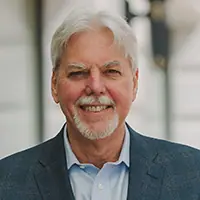
Branchless Banking Comes of Age
There is a bias that a lot of people have about banking (including some bankers), and it goes like this: The industry is so highly regulated that CEOs and their boards have little room for innovation or creativity in how they design their bank’s business model. Actually, nothing could be further from the truth.
Some things clearly aren’t allowed. Banks aren’t permitted to own car dealerships or restaurant chains, for example. But there is still enormous flexibility in determining a bank’s strategy, and increasingly, technology is providing the means to do something that is materially different.
This issue of Bank Director magazine contains our 2014 Growth Leaders Ranking, where we focus on banks that demonstrated the strongest revenue growth in 2013 across four separate categories, the most important of which is core revenue. Two banks that did particularly well on the core revenue ranking-Customers Bancorp, which finished first, and EverBank Financial Corp., which placed second-designed their business models around technology from the very beginning.
Headquartered in Wyomissing, Pennsylvania, $4.1-billion asset Customers operates 16 branches in Eastern Pennsylvania, New Jersey and New York. Chairman and CEO Jay Sidhu headed up an investor group that acquired a controlling stake in the ailing New Century Bank in 2009, renamed it Customers and used that platform to expand throughout the region by doing a series of acquisitions. New Century had five branches in suburban Philadelphia. Customers now operates over a much larger area, but has made a deliberate effort to limit the size of its branch structure through the use of technology. The bank’s customers are encouraged to use its online and mobile channels, and it provides a concierge banking service to the small business owners who are too busy to visit a branch but want a more personal form of service.
Customers branches have significantly higher deposit balances than most banks its size because it has intentionally kept their number low relative to the size of its market area. The combination of high deposit footings and low overhead enables it to run a profitable branch network while paying 10 to 20 basis points more on deposits than many of its competitors, which has become an important competitive advantage.
But Sidhu, who has earned the reputation of being a forward-looking thinker when it comes to strategy, isn’t done yet. Customers announced in February that it will launch a virtual bank built on a mobile banking platform. It will use the domain name BankMobile.com and will launch in the third quarter of this year. Sidhu says that the bank’s research found that 50 percent of U.S. households have not used a branch in the last year-and 75 percent of them are under the age of 30. “The big challenge for community banks is attracting the young people,” Sidhu says.
Here’s my takeaway on Customers: You can operate within the comfortable confines of a community bank model and still reduce your cost of distribution through the aggressive use of mobile and online technology. But to make the math work, you have to manage the density of your branch network-otherwise new technologies like mobile become just another cost.
Customers Bank is migrating towards a distribution network that takes a minimalist approach to brick and mortar. Jacksonville, Florida-based EverBank Financial Corp. pretty much started out minimalist. Its current management team, headed by Chairman and CEO Robert Clements, acquired the company in 2002 and used it as a platform to build a nationwide consumer banking franchise. The $17.6-billion asset bank does most of its consumer business through online and mobile channels.
The knock against virtual banks has always been their inability to generate a significant volume of low cost transaction accounts like checking and savings, but instead had to offer high-rate certificates of deposit that are more expensive and inherently less stable. The assumption has always been that consumers will only give you their checking and debit card business if they trust you. But how can they trust you if they don’t know you? And how can they know you if they can’t see you?
However, 70 percent of EverBank’s deposits in 2013 came from checking, money market and savings accounts-and they never see most of those customers. What EverBank has discovered is that there’s a group of materially attractive customers out there who are quite comfortable trusting their household money to a branchless bank, and they’ve got a lot of them. According to the bank’s most recent 10K filing, “The majority of our deposit balances come from financially savvy, self-directed individuals, as well as small and mid-sized business. These clients maintain an average deposit balance per household (excluding escrow deposits) of $81,158 as of December 31, 2013, which we believe is more than three times the industry average.”
Here’s my takeaway on EverBank: For certain kinds of customers, robust technology doesn’t impede the development of a relationship, it enhances it. And apparently, those same customers have got a lot of money.

Join OUr Community
Bank Director’s annual Bank Services Membership Program combines Bank Director’s extensive online library of director training materials, conferences, our quarterly publication, and access to FinXTech Connect.
Become a Member
Our commitment to those leaders who believe a strong board makes a strong bank never wavers.



